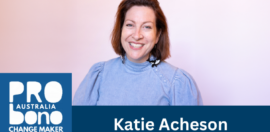Housing Stress on the Rise

5 December 2012 at 4:32 pm
The demand for social housing in Australia is rising and waiting lists remain long, according to a new report by the Australian Institute of Health and Welfare (AIHW).
The Housing assistance in Australia 2012 report also reveals that Australian households are increasingly experiencing ‘housing stress’ with an increase from 900,000 (or 14% of all households) in 1995 to 1.4 million (17%) in 2010.
AIHW defines moderate housing stress as spending more than 30% of gross household income on housing costs.
“The number of households in severe housing stress (defined as spending more than 50% of gross household income on housing) also increased-from 300,000 (4.6% of all households) in 1995 to more than 460,000 (5.5%) in 2010,” AIHW spokesperson Geoff Neideck said.
Over half a million of these households are low income households – those whose income is in the bottom two-fifths of the population.
Victorian Council of Social Service chief executive Penny Wilson said that the report confirms what VCOSS has been hearing from its members for quite some time, which is that the critical lack of affordable housing is the leading driver of disadvantage in the community.
“We hear reports of people having to choose between feeding their families and paying their rent and who regularly spend 60-70 per cent or more of their income on keeping a roof over their heads,” Wilson said.
“People are going into multiple forms of debt in an attempt to cope and are increasingly only one change in life circumstances away from severe crisis.
“We know that homelessness is growing Australia-wide with an estimated 2,265,000 people – or 12.8 per cent of the population – living below the poverty line. Sadly, this includes almost 600,000 children. This means that 1-in-8 people overall and 1-in-6 children are living below the poverty line,” Wilson said.
Chief executive of Hanover Welfare Services Tony Keenan said that the figures in the AIHW report also reflect what Hanover staff see on the ground.
“The lack of affordable housing across suburban Melbourne is becoming a major issue for our clients,” Keenan said.
“It is increasingly difficult to find adequate housing for clients and many in housing are struggling to meet the costs.”
Government housing assistance is currently provided under the National Affordable Housing Agreement, which aims to ensure that all Australians have access to affordable, safe and sustainable housing.
AIHW says that over the last decade support has increasingly been focused on those in the greatest need, including groups such as Indigenous Australians, young and older Australians and people with disability.
It says that support is also focused on people who were homeless, whose life or safety was at risk in their accommodation, whose condition was aggravated by their housing or who had very high rental costs.
Keenan said that it was pleasing to see the increase in community housing over the period as more housing funded through Nation Building came on line.
However he cautioned that this trend needed to be sustained into the future.
“All levels of government, business leaders, the community sector and the broader community must make it a priority to find long term and sustainable solutions to increase the supply of affordable housing,” Keenan said.
According to AIHW, in June 2011 there were 421,100 social housing dwellings in Australia representing less than 4% of Australian housing stock.
AIHW says that around 331,400 households were in public rental housing, down from 333,400 in 2010 and 345,300 in 2004.
“The report shows a significant increase in the availability of mainstream community housing, that is, housing managed by community organisations and supported through a variety of funding methods, including government funding. This rose from about 26,800 households in 2004 to almost 58,000 in 2011,” Neideck said.
Australians for Affordable Housing’s Joel Pringle said that the report highlights the increasing stress on low income housing.
“The federal and state governments need to work together to deliver an affordable housing growth fund which would guarantee an increase in social housing available to families doing it tough.” Pringle said.
“Rent assistance payments have been allowed to fall behind increase in rental costs.”
He said that an immediate increase in rent assistance payments of at least $22 per week was needed.








I think I have made a mistake trying to go it alone on a low wage. I think I would be better off if I cut my hours at work so that I qualify for some of the subsidies out there, such as public housing and NRAS rent. It is just getting difficult and I know that I will have to do something soon. My landlord will not hold my rent at the price it is now. He will be bargaining on it being too difficult for me to move.